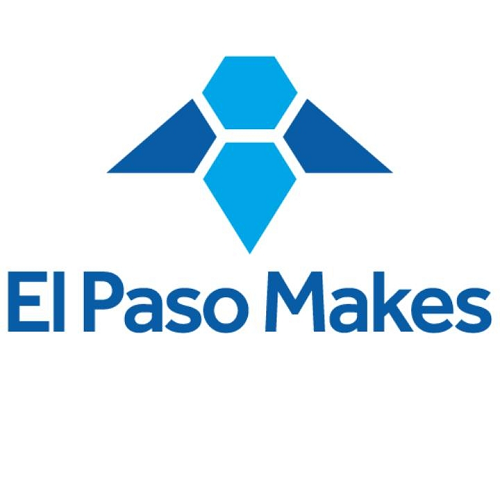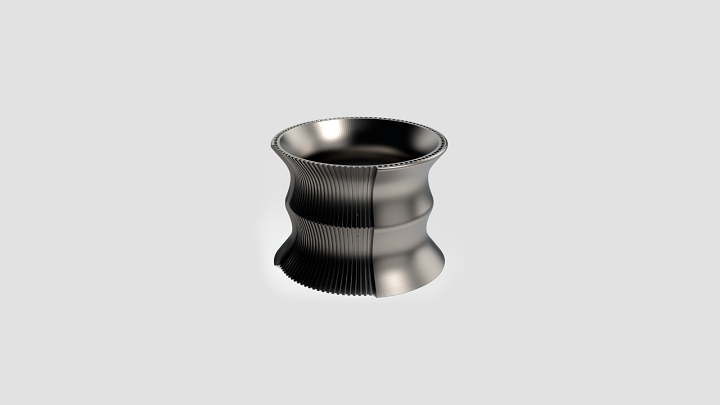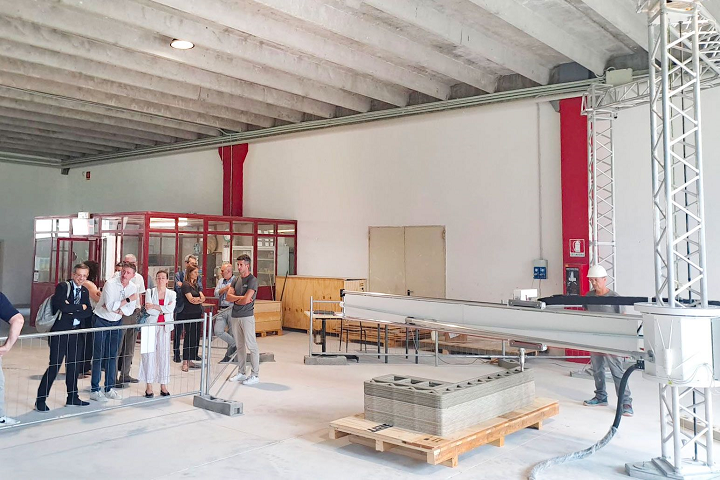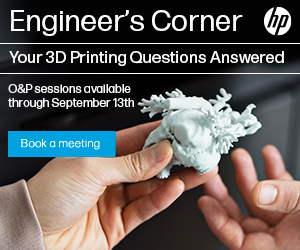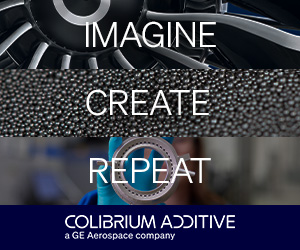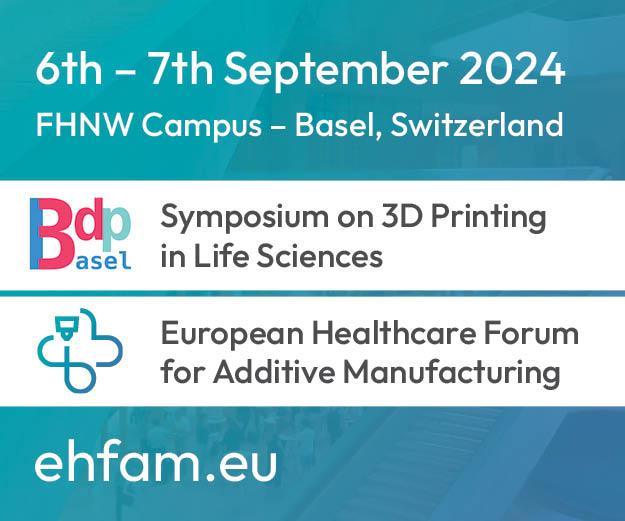We’re taking care of business first in today’s 3D Printing News Briefs, and then moving on to news about a variety of different 3D printing materials, including egg whites. We’ll finish with news from the additive construction (AC) sector. Read on for all the details!
El Paso Makes is Newest NCDMM Subsidiary
The National Center for Defense Manufacturing and Machining (NCDMM) announced that El Paso Makes, a one-stop resource for manufacturers in El Paso, West Texas, is its newest subsidiary. It’s an economic development partnership powered by UTEP’s Aerospace Center and W.M. Keck Center for 3D Innovation, along with the City of El Paso, the County of El Paso, Workforce Solutions Borderplex, the Rio Grande Council of Governments, and the El Paso Chamber. With all the resources available through these partnerships, and now NCDMM, El Paso Makes could help mobilize the area into a great manufacturing ecosystem, complete with a skilled workforce for future economic prosperity. This subsidiary helps manufacturers in the West Texas frontier access the quality research, suppliers, and industry resources they need to meet the demands of the aerospace and defense markets, which is exactly what El Paso Makes is focused on expanding through education and workforce development.
“NCDMM is a nationally recognized industry leader in executing successful applied research and development projects to improve DoD weapon and support systems. We will work collectively with stakeholders and industry experts to propel the El Paso region forward, foster innovations, and expand the talent stream of our nation’s aerospace and defense sector,” said Randy Gilmore, Vice President and Chief Development Officer at NCDMM and President at El Paso Makes.
BLT Announces Mass Production of BLT- Ti₂AlNb Powder
Xi’an Bright Laser Technologies (BLT) has announced the successful mass production of high-quality Ti₂AlNb powder for additive manufacturing. Due to its excellent resistance to corrosion and oxidation, high strength-to-weight ratio, and excellent high-temperature performance, this is a very promising lightweight structural material. Plus, because of its good creep resistance, it’s an ideal material for high-performance aerospace and automotive applications. But, with low thermal deformability and poor room temperature plasticity, traditional methods of manufacturing this material were challenging, which is why it’s so great that it can be processed with AM now. With research still in the early stages, there haven’t been many successful 3D printed Ti₂AlNb parts. BLT’s work in mass-producing Ti₂AlNb powder for AM will help advance research into the material’s microstructures and properties, as well as promote large-scale engineering application of parts made with the powder.
Crucial to AM success is high-quality powder, and BLT produces Ti₂AlNb using advanced inert gas atomization technology, paired with optimized powder processing methods. Its BLT-Ti₂AlNb alloy has great properties at both high- and room-temperature, and once heat treated, 3D printed parts made with this powder feature a tensile strength of 250-270 MPa and yield strength of 140-160 MPa. To demonstrate the material, BLT made a flow channel sample, which is representative of a normal structure in an actively cooled liquid engine with its multiple rectangular flow channels. The thinnest wall of the 3D printed structure is only 1 mm thick, which shows off the selective laser melting (SLM) forming capability of the powder. The company carefully optimized the process parameters for preparing Ti₂AlNb-based alloy components, and these parameters can be applied to all models of its commercially available equipment.
nano3Dprint Launches Conductive Silver Ink Products for Electronics
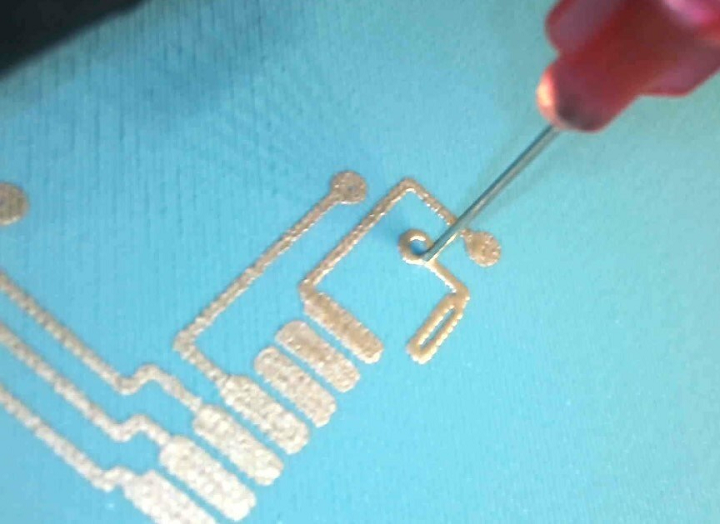
nano3Dprint’s new DW100-24 silver conductive ink is perfect for direct write printing on preexisting substrates or for embedding into PLA, ABS or other 3D printed materials.
Leading printed electronics and AM solutions provider nano3Dprint has launched a Conductive Silver Ink Product, developed in collaboration with Creative Materials for the direct write printed electronics industry. DW100-24, meant for use in the company’s A2200, B3300, and MatDep Pro multimaterial 3D printers, is a waterborne, low V.O.C., very electrically conductive ink and coating, and can air-dry at room temperature or be heat cured at 100°C – 175°C for maximum conductivity. The ink is N-methyl Pyrrolidone free, can uniformly adhere to surfaces like ABS, Kapton, Mylar, glass, and PLA, and is very resistant to flexing and creasing, unlike conventional conductive materials. nano3Dprint’s machines combine FDM extrusion and a Materials Dispensing System for precision printing of functional inks and pastes, and this silver ink, with its exceptional electrical conductivity, is easy to deposit in intricate patterns for applications such as medical electrodes, printed circuit boards (PCBs), embedded 3D circuitry, smart sensors, and more.
“We’re excited to collaborate with Creative Materials to bring these cutting-edge conductive silver ink products to the market. Our commitment to innovation and sustainability drives us forward,” said nano3Dprint CEO Ramsey Stevens.
Nature-Inspired Bioink from Egg Whites for Tissue Engineering
Bioinks, made of natural and synthetic substances, give living cells a supportive environment in which to attach and multiply, while 3D printing them enables the production of intricate artificial tissues for healing injuries, drug development, or even designing organs. Researchers at the Terasaki Institute were inspired by nature when developing a new tissue engineering bioink that uses egg whites, which are made up mostly of proteins. By inserting methacryloyl groups into the structure of the egg whites through a process called methacryloylation, the scientists transform them into a specialized material for 3D bioprinting called egg white methacryloyl (EWMA). When the bioink is exposed to light, the groups react and cause strong crosslinks, which form a gel-like structure to solidify it into a 3D shape. The adaptable EWMA bioink has excellent bioactivity and biocompatibility and contains antiviral and antibacterial capabilities. Plus, nutrient-rich egg whites are an inexpensive, readily available material, so the research can continue.
“This innovative approach to creating bioinks from egg whites demonstrates the immense potential of bio-inspired materials in tissue engineering. By harnessing readily available natural resources and enhancing them through clever chemical modifications, we’re opening new avenues for personalized regenerative medicine,” explained Dr. Ali Khademhosseini, CEO at TIBI and a renowned expert in bioengineering. “Such breakthroughs are crucial in our quest to develop more effective and accessible solutions for organ failure, cardiovascular disease, and cancer treatments.”
Crane WASP Used for Education and Research in the Construction Sector
The ESEB (Ente Sistema Edilizia Brescia) and the Fondazione ITS Academy “Cantieri dell’Arte,” of which ESEB is a founding member, have acquired the architectural Crane WASP 3D printer, which will be used by students. This is the first Italian educational institution to integrate large-scale construction 3D printing into its laboratory courses, and the Crane WASP will be used to promote research and sustainable development in construction. Students will have the exciting opportunity to learn how the 3D concrete printing system works, and use it for their projects.
Crane WASP, designed and manufacturing entirely in Italy, is said to be the first architectural 3D printer that can process locally sourced natural materials and agricultural waste, in addition to standardized construction materials like concrete. The scalable system can be adapted to fit small and indoor spaces, thanks to its modular structure; this makes it a great choice for laboratories, like the ones at ESEB and ITS Academy Cantieri dell’Arte. Training courses like the ones offered by these educational institutes are an exciting milestone for the Italian construction landscape, as it highlights that the advanced technologies once used only by AM specialists are becoming truly practical tools in the sector.
UVA Engineers 3D Printing Stronger Concrete with Wood Pulp

Ugur Kilic, a University of Virginia civil engineering PhD student, keeps an eye on the concrete printer in Professor Osman Ozbulut’s lab at UVA in this 2022 photo. Image: Tom Cogill, UVA Engineering
Concrete production contributes greatly to global carbon emissions, so the need for more sustainable alternatives in construction is critical. 3D printing is helping, but it’s been tough to develop a material that’s both printable and extremely strong, and the long-term performance and environmental impact of 3D printed concrete buildings is still relatively unknown. Engineers from the University of Virginia School of Engineering and Applied Science have come up with a novel solution that could revolutionize 3D printed concrete: plant-based cellulose nanofibrils (CNF), which are extracted from wood pulp. When applied to concrete, this renewable material can increase flowability for smoother 3D printing, and improve the strength and durability of concrete. Plus, testing by the UVA researchers shows that their CNF-enhanced concrete performs very well under stress, which means it could build more resilient structures.
Osman E. Ozbulut, a professor in the UVA Department of Civil and Environmental Engineering, said, “The improvements we saw on both printability and mechanical measures suggest that incorporating cellulose nanofibrils in commercial printable materials could lead to more resilient and eco-friendly construction practices sooner rather than later.”
You can read more about the team’s work in their research paper.
Construction Begins on First 3D Printed Homes in Ireland
Finally, construction on Ireland’s first 3D printed homes has begun in Dundalk. Harcourt Technologies (HTL) is using the BOD 2 gantry-mounted concrete 3D printer by COBOD International to fabricate three social housing units at Grange Close. HTL says this additive construction system triples the speed of building when compared to traditional construction methods, and Managing Director Justin Kinsella also said it enables a one-third labor cut and maximum three-fold boost in pace; all told, it translates to a 25-30% increase in speed. The process is automated and can currently print a concrete layer in less than 20 minutes, and Kinsella said this faster speed can also help decrease overall project costs.
“It’s like building a concrete block wall, but the machine lays 50mm layers instead of manual placement,” Kinsella said.
The Local Authority supplied the land for this specific initiative. The three-bedroom homes are projected to be finished by next month, and once they’re completed, three families from Louth County Council’s social housing list will move in.
Subscribe to Our Email Newsletter
Stay up-to-date on all the latest news from the 3D printing industry and receive information and offers from third party vendors.
You May Also Like
The J.A.M.E.S Community offers Exclusive Webinar Access to Members
The J.A.M.E.S platform provides a valuable resource for individuals interested in the field of Additively Manufactured Electronics (AME) and 3D printing. This includes a selected collection of webinars presented by...
3D Printing Financials: 3D Systems Grapples with Revenue Drop and Delayed Reports
3D Systems (NYSE: DDD) has finally released its first-quarter 2024 financial results after facing significant delays in reporting this year. The company only wrapped up filing its 2023 full-year results...
Lockheed Martin’s $450M Bet on Terran Orbital to Boost Satellite Production
Lockheed Martin (BCBA: LMT) is buying Terran Orbital (NYSE: LLAP), a company that’s been quietly shaking up satellite manufacturing with its 3D printing. This $450 million deal is set to...
3D Printing Financials: Velo3D’s Tough Quarter and What Lies Ahead
Velo3D (NYSE: VLD) has been navigating rough financial waters this past year, with a series of tough quarters that have left it struggling to regain its footing. The second quarter...


